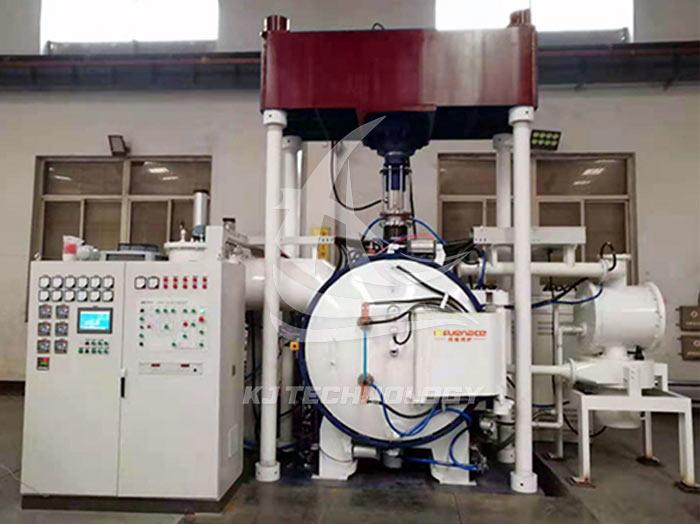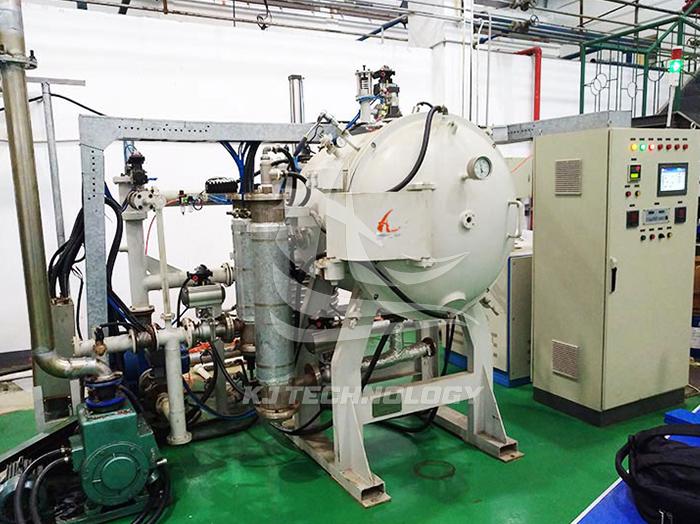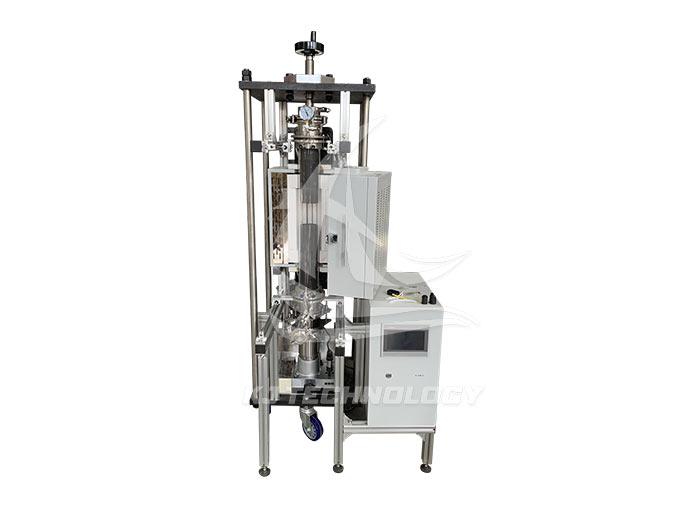The temperature of the experimental vacuum hot press furnace cannot rise
 09-22-2025 Author: KJ technology
09-22-2025 Author: KJ technology
The inability to increase the temperature of the experimental vacuum hot press furnace may be caused by power and heating element failures, temperature control system issues, insufficient equipment sealing, or abnormal external auxiliary systems. Specific causes need to be identified and repaired through systematic investigation. The following are specific reasons and solutions:
1. Power and heating element issues
power failure
Phenomenon: There is no current passing through the heating element or the voltage is unstable.
resolvent:
Check if the power circuit is in good contact and use a multimeter to measure if the input voltage meets the equipment requirements.
If the power supply voltage fluctuates greatly, it is necessary to install a voltage regulator or contact the power department for handling.
Heating element damaged
Phenomenon: Abnormal resistance value of heating element (such as open circuit or short circuit).
resolvent:
Use a multimeter to measure the resistance of the heating element and compare it with the rated value (such as graphite heaters, which typically have a resistance of a few ohms to tens of ohms).
If the resistance value deviates from the normal range, replace the heating element and ensure that the new element matches the equipment model.
2. Temperature control system malfunction
Temperature sensor error
Phenomenon: The temperature displayed by the temperature controller does not match the actual furnace temperature.
resolvent:
Compare and calibrate temperature sensors (such as thermocouples) with standard thermometers. If the error exceeds ± 1 ℃, the sensor needs to be replaced.
Check if the sensor is installed in the correct position and avoid getting close to heating elements or cold ends.
PID parameters are unreasonable
Phenomenon: Large temperature fluctuations or slow heating.
resolvent:
Adjust PID parameters according to the equipment manual, or use self-tuning function to optimize parameters.
Avoid frequent parameter modifications to prevent system instability.
Solid state relay breakdown
Phenomenon: The heating element is continuously powered on, and the temperature rises uncontrollably or cannot be turned off.
resolvent:
After power failure, measure the output resistance of the solid-state relay with a multimeter. If the resistance is close to 0 Ω, it indicates that the relay has been broken down and needs to be replaced with a relay of the same model.
3. Equipment sealing issues
Furnace body leakage
Phenomenon: Insufficient vacuum leads to heat loss, or air enters the furnace to oxidize heating elements.
resolvent:
Check whether the sealing rings at the furnace door, observation window, and pipeline connections are aging or damaged, and replace them in a timely manner.
Use a helium mass spectrometer leak detector to detect small leaks, with a focus on inspecting thermocouple entry points, flange connections, and other areas.
vacuum pump failure
Phenomenon: Insufficient oil level, oil contamination, or valve leakage in the vacuum pump.
resolvent:
Regularly replace the vacuum pump oil (e.g. every 500 hours) to ensure that the oil level is at 1/2~2/3 of the viewing window.
Check if the vacuum pump valve is tightly closed, repair or replace the leaking valve.
4. External auxiliary system issues
Insufficient cooling water flow
Phenomenon: The heating element automatically shuts off due to overheating protection.
resolvent:
Check if the cooling water circuit is unobstructed and clean the scale or impurities inside the water-cooled jacket.
Ensure that the cooling water pressure is stable and the flow rate meets the equipment requirements.
Insufficient hydraulic system pressure
Phenomenon: The pressure cannot reach the set value during pressurization, which affects the densification of the material.
resolvent:
Check the hydraulic oil level and replenish it to the specified scale line.
Inspect the hydraulic pump and cylinder seals, and repair any leaks.
5. Operation and maintenance suggestions
Regularly calibrate equipment
Calibrate temperature sensors, vacuum gauges, and other instruments every six months to ensure accurate data.
Standardize operational procedures
Avoid frequent opening and closing of the furnace door to reduce heat loss; During the heating stage, gradually increase the pressure according to the process curve to prevent thermal shock cracking.
Establish and maintain archives
Record equipment operating parameters, fault phenomena, and handling methods to provide reference for subsequent maintenance.








